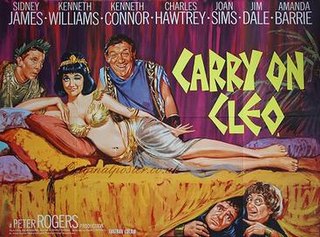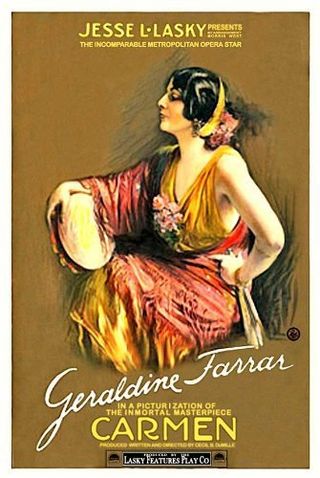
Marcus Antonius, commonly known in English as Mark Antony, was a Roman politician and general who played a critical role in the transformation of the Roman Republic from a constitutional republic into the autocratic Roman Empire.

The Second Triumvirate was an extraordinary commission and magistracy created for Mark Antony, Lepidus, and Octavian to give them practically absolute power. It was formally constituted by law on 27 November 43 BC with a term of five years; it was renewed in 37 BC for another five years before expiring in 32 BC. Constituted by the lex Titia, the triumvirs were given broad powers to make or repeal legislation, issue judicial punishments without due process or right of appeal, and appoint all other magistrates. The triumvirs also split the Roman world into three sets of provinces.

The Battle of Philippi was the final battle in the Liberators' civil war between the forces of Mark Antony and Octavian and the leaders of Julius Caesar's assassination, Brutus and Cassius, in 42 BC, at Philippi in Macedonia. The Second Triumvirate declared the civil war ostensibly to avenge Julius Caesar's assassination in 44 BC, but the underlying cause was a long-brewing conflict between the so-called Optimates and the so-called Populares.

Carry On Cleo is a 1964 British historical comedy film, the tenth in the series of 31 Carry On films (1958–1992). Regulars Sid James, Kenneth Williams, Kenneth Connor, Charles Hawtrey, and Jim Dale are present and Connor made his last appearance until his return in Carry On Up the Jungle six years later. Joan Sims returned to the series for the first time since Carry On Regardless three years earlier. Sims would now appear in every Carry On up to Carry On Emmannuelle in 1978, making her the most prolific actress in the series. Jon Pertwee makes the first of his four appearances in the series. The title role is played by Amanda Barrie in her second and last Carry On. Along with Carry On Sergeant and Carry On Screaming!, its original posters were reproduced by the Royal Mail on stamps to celebrate the 50th anniversary of the Carry On series in June 2008. The film was followed by Carry On Cowboy 1965.

Cleopatra is a 1917 American silent historical drama film based on H. Rider Haggard's 1889 novel Cleopatra, the 1890 play Cleopatre by Émile Moreau and Victorien Sardou, and the play Antony and Cleopatra by William Shakespeare. The film starred Theda Bara in the title role, Fritz Leiber Sr. as Julius Caesar, and Thurston Hall as Mark Antony.

A Slave of Fashion is a 1925 American silent romantic comedy film directed by Hobart Henley. The film stars Norma Shearer and Lew Cody, with William Haines. A young Joan Crawford had an early uncredited role as a mannequin.

The Merry Widow is a 1925 American silent romantic drama/black comedy film directed and written by Erich von Stroheim. Released by Metro-Goldwyn-Mayer, the film stars Mae Murray, John Gilbert, Roy D'Arcy, and Tully Marshall, with pre-fame uncredited appearances by Joan Crawford and Clark Gable.

Carmen is a 1915 American silent drama film directed by Cecil B. DeMille. The film is based on the novella Carmen by Prosper Mérimée. The existing versions of this film appear to be from the re-edited 1918 re-release.

Joan the Woman is a 1916 American epic silent drama film directed by Cecil B. DeMille and starring Geraldine Farrar as Joan of Arc. The film premiered on Christmas Day in 1916. This was DeMille's first historical drama. The screenplay is based on Friedrich Schiller's 1801 play Die Jungfrau von Orleans. This film was considered to be the "first cinematic spectacle about Joan of Arc."

The Great Love is a 1918 American silent war drama film directed and written by D. W. Griffith who, along with scenario writer Stanner E.V. Taylor, is credited as "Captain Victor Marier". The film stars George Fawcett and Lillian Gish. Set during World War I, exterior scenes were shot on location in England. The Great Love is now considered to be a lost film.
Antonia was a Roman noblewoman who married the Greek nobleman Pythodoros of Tralles. She has been identified as the daughter of the general Mark Antony, presumably by his second wife Antonia Hybrida Minor. Theodor Mommsen was the first historian to identify Pythodoros' wife as the same woman as the daughter of Antony who was engaged to a son of the triumvir Lepidus. Mommsen's view has found wide acceptance but is not without its detractors.

Helen Louise Gardner was an American stage and film actress, screenwriter, film producer and costume designer. She was the first film actor to form her own production company. Her productions were primarily feature-length films, making her one of the earliest adopters of the feature film. Gardner's work was distinct for frequently centering female characters. Gardner is also considered one of the screen's first vamps.

Cleopatra VII, the last ruler of Ptolemaic Egypt, died on either 10 or 12 August, 30 BC, in Alexandria, when she was 39 years old. According to popular belief, Cleopatra killed herself by allowing an asp to bite her, but according to the Roman-era writers Strabo, Plutarch, and Cassius Dio, Cleopatra poisoned herself using either a toxic ointment or by introducing the poison with a sharp implement such as a hairpin. Modern scholars debate the validity of ancient reports involving snakebites as the cause of death and whether she was murdered. Some academics hypothesize that her Roman political rival Octavian forced her to kill herself in a manner of her choosing. The location of Cleopatra's tomb is unknown. It was recorded that Octavian allowed for her and her husband, the Roman politician and general Mark Antony, who stabbed himself with a sword, to be buried together properly.

Uncle Tom's Cabin was a 1918 American silent drama film directed by J. Searle Dawley, produced by Famous Players–Lasky Corporation and distributed by Paramount Pictures under the Famous Players–Lasky name. The film is based on Harriet Beecher Stowe's 1852 novel Uncle Tom's Cabin and George Aiken's eponymous play.

Let's Get a Divorce is a 1918 American silent comedy film starring Billie Burke and written for the screen by husband and wife team John Emerson and Anita Loos. The film was produced by the Famous Players–Lasky company and distributed through Paramount Pictures. The film is based on the popular stage play Divorçons by Victorien Sardou and Émile de Najac.

Pied Piper Malone is a 1924 American silent comedy drama film directed by Alfred E. Green and starring Thomas Meighan. The Famous Players–Lasky produced the film and Paramount Pictures distributed.

Lost in Transit is a lost 1917 American silent drama film directed by Donald Crisp and written by Gardner Hunting and Kathlyn Williams. The film stars George Beban, Helen Jerome Eddy, Pietro Sosso, Vera Lewis, Henry A. Barrows, and Frank Bennett. The film was released on September 3, 1917, by Paramount Pictures.

Between Friends is a 1924 American silent melodrama film based on the eponymous 1914 novel by Robert W. Chambers. The film was directed by J. Stuart Blackton and produced by Albert E. Smith. It stars Lou Tellegen, Anna Q. Nilsson, and Norman Kerry. The feature was distributed by Vitagraph Studios, which was founded by Blackton and Smith in 1897 in Brooklyn, New York. The film is lost.

The Man Life Passed By is a 1923 American silent drama film directed by Victor Schertzinger and starring Percy Marmont, Jane Novak, and Eva Novak. The Novak sisters portray two sisters in the film.

Pearl Sindelar was an American silent film actress.



















